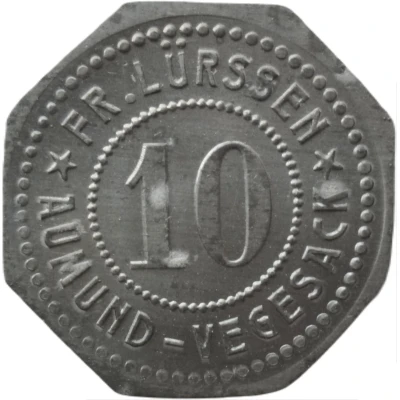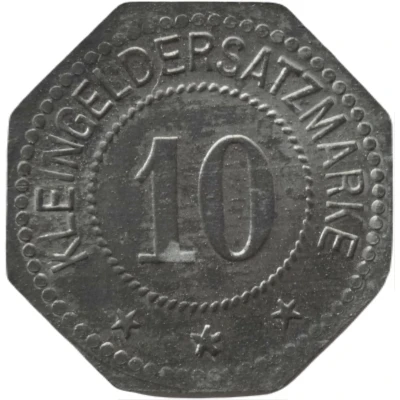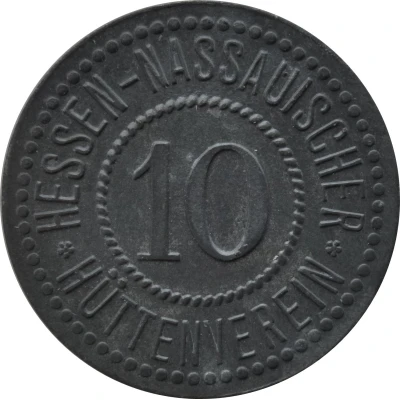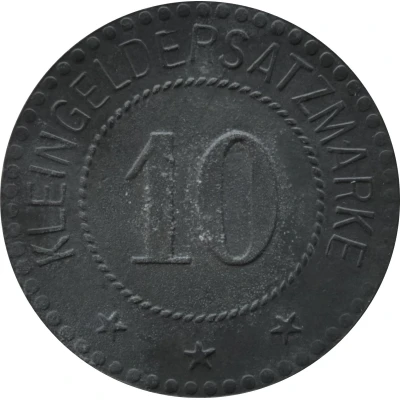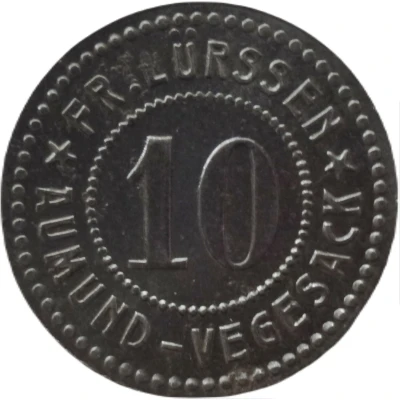
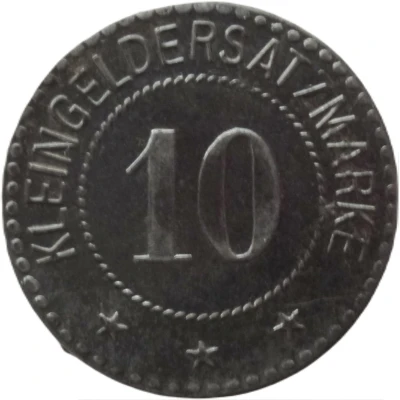

© Willem63 (CC BY-NC-SA)
10 Pfennigs - Aumund-Vegesack (Fr. Lürssen) ND
| Iron | 2.3 g | 20.0 mm |
| Issuer | German notgeld (Germany) |
|---|---|
| Type | Standard circulation coin |
| Value | 10 Pfennigs (10 Pfennige) (0.10) |
| Currency | Mark (1914-1924) |
| Composition | Iron |
| Weight | 2.3 g |
| Diameter | 20.0 mm |
| Thickness | 1.1 mm |
| Shape | Round |
| Technique | Milled |
| Orientation | Medal alignment ↑↑ |
| Demonetized | Yes |
| Updated | 2024-10-04 |
| Numista | N#338108 |
|---|---|
| Rarity index | 97% |
Reverse
Pearl rim, legend surrounding rope circle with denomination centered
Script: Latin
Lettering:
KLEINGELDERSATZMARKE
10
★ ★ ★
Edge
Plain
Comment
Menzel: BBBFa: Bootsbau (boat building)
Interesting fact
One interesting fact about the 10 Pfennigs - Aumund-Vegesack (Fr. Lürssen) ND coin from German notgeld (Germany) made of Iron weighing 2.3 g is that it was issued during a time of economic crisis in Germany, specifically during the hyperinflation period of the 1920s. The coin was part of a series of emergency currency issued by local authorities, known as "notgeld," which translates to "emergency money" in English. The use of iron as the material for the coin was likely chosen due to its durability and affordability, as well as its symbolic connection to the industrial and economic strength of Germany.
